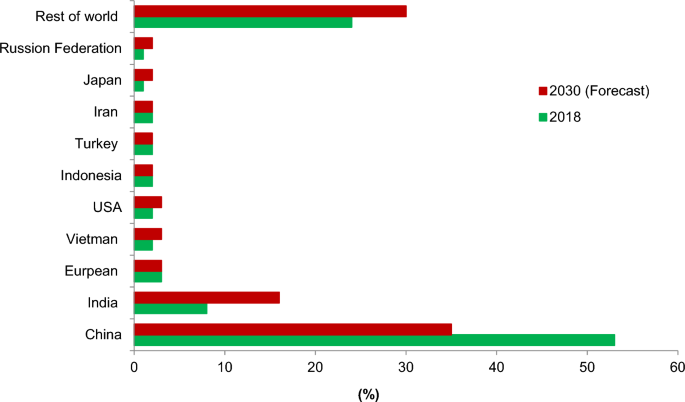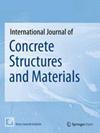Concrete Made with Partial Substitutions of Wheat Straw Ash: A Review
IF 3.6
3区 工程技术
Q1 CONSTRUCTION & BUILDING TECHNOLOGY
International Journal of Concrete Structures and Materials
Pub Date : 2023-10-02
DOI:10.1186/s40069-023-00616-1
引用次数: 0
Abstract
Abstract Many scientists are now focusing their attention on the utilization of valuable industrial or agricultural wastes as the primary raw material for the construction sector. These wastes, on the other hand, are affordable and readily accessible, making them ideal for commercial use while also contributing to the reduction of environmental degradation. Wheat straw ash (WTSA) is a kind of agricultural waste that has the potential to be utilized in concrete. Although many researchers are focused on utilization of WTSA in concrete. However, an updated review is required which provides easy access for the reader to get an idea about the benefits of WTSA in concrete. Therefore, this study provides a comprehensive review of the utilization of WTSA as a concrete ingredient. Physical and chemical compositions of WTSA, flowability, mechanical strength (compressive, flexure, tensile strength, and elastic modulus), and durability properties (permeability, carbonation, ultrasonic pulse velocity, alkali-silica reaction and chloride attacks) are the main aspects of this review. Results indicate that the performance of concrete improved with partial substitutions of cement with WTSA but simultaneously decreased the flowability of concrete. The optimum dose is important as higher dose results in decreased mechanical strength. The typical optimum dose ranges from 10 to 20% by weight of the binder. The performance of concrete in terms of durability was also improved but less research is carried out on the durability performance of concrete with WTSA. Additionally, despite WTSA's improvement in mechanical strength, concrete still exhibits lower tensile strain, which leads to brittle failure. Therefore, it was recommended that further study should be done to increase its tensile strength.

麦秸灰部分替代混凝土的研究进展
摘要利用有价值的工业或农业废弃物作为建筑行业的主要原料,是许多科学家关注的焦点。另一方面,这些废物价格低廉,容易获得,因此是商业用途的理想选择,同时也有助于减少环境退化。麦秸灰是一种极具开发利用潜力的农业废弃物。尽管许多研究者关注的是WTSA在混凝土中的应用。然而,需要进行更新的审查,以便读者能够轻松了解混凝土中WTSA的好处。因此,本研究对WTSA作为一种具体成分的应用进行了全面的综述。本文主要综述了WTSA的理化成分、流动性、机械强度(抗压、抗折、抗拉强度和弹性模量)和耐久性(透气性、碳酸化、超声脉冲速度、碱-硅反应和氯化物侵蚀)。结果表明,WTSA部分替代水泥可改善混凝土的性能,但同时降低了混凝土的流动性。最佳剂量很重要,因为较高的剂量会导致机械强度下降。典型的最佳剂量范围为按粘合剂重量计的10%至20%。混凝土在耐久性方面的性能也有所提高,但对掺加WTSA的混凝土耐久性的研究较少。此外,尽管WTSA提高了混凝土的机械强度,但混凝土仍然表现出较低的拉伸应变,从而导致脆性破坏。因此,建议进一步研究提高其抗拉强度。
本文章由计算机程序翻译,如有差异,请以英文原文为准。
求助全文
约1分钟内获得全文
求助全文
来源期刊

International Journal of Concrete Structures and Materials
CONSTRUCTION & BUILDING TECHNOLOGY-ENGINEERING, CIVIL
CiteScore
6.30
自引率
5.90%
发文量
61
审稿时长
13 weeks
期刊介绍:
The International Journal of Concrete Structures and Materials (IJCSM) provides a forum targeted for engineers and scientists around the globe to present and discuss various topics related to concrete, concrete structures and other applied materials incorporating cement cementitious binder, and polymer or fiber in conjunction with concrete. These forums give participants an opportunity to contribute their knowledge for the advancement of society. Topics include, but are not limited to, research results on
Properties and performance of concrete and concrete structures
Advanced and improved experimental techniques
Latest modelling methods
Possible improvement and enhancement of concrete properties
Structural and microstructural characterization
Concrete applications
Fiber reinforced concrete technology
Concrete waste management.
 求助内容:
求助内容: 应助结果提醒方式:
应助结果提醒方式:


